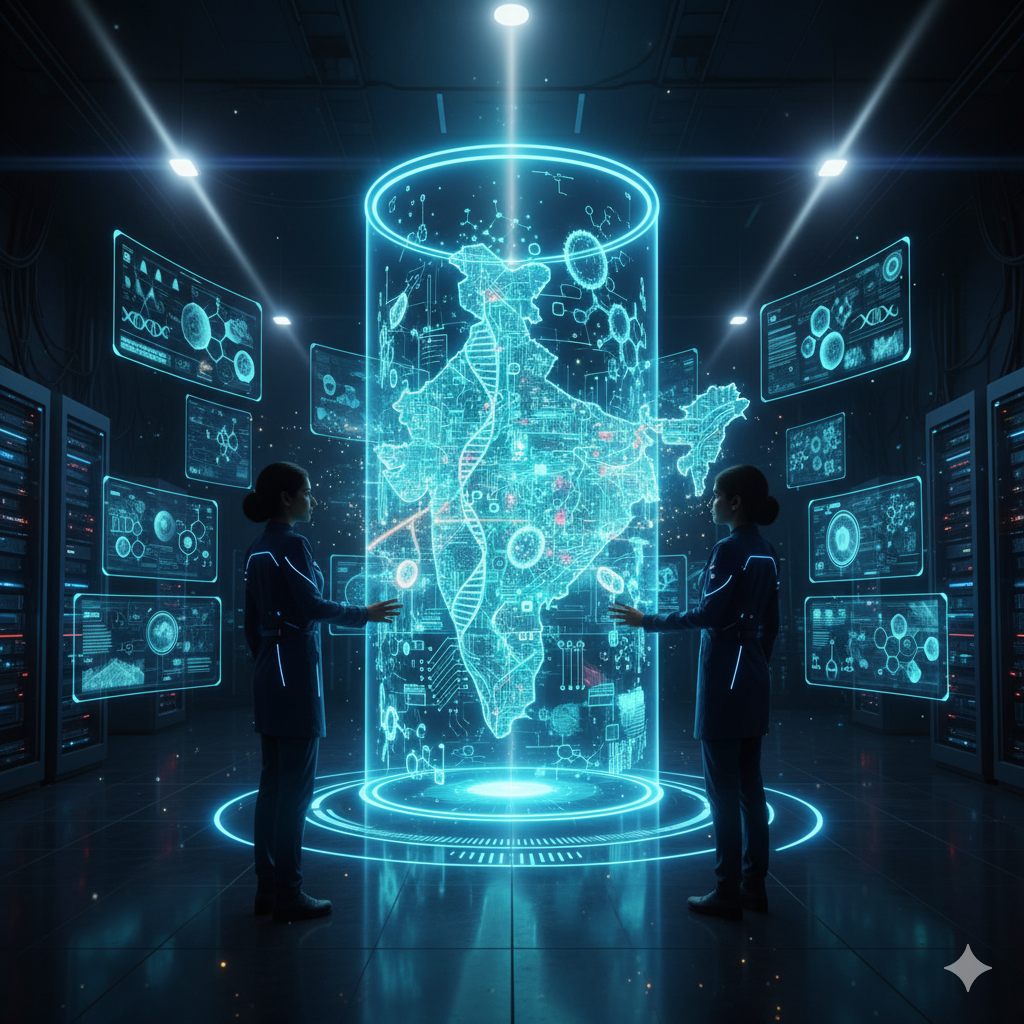Introduction
In the modern digital age, cybersecurity is one of the most critical concerns for individuals, businesses, governments, and global infrastructure. The rapid expansion of internet connectivity, cloud computing, and the Internet of Things (IoT) has increased the attack surface for cybercriminals, making traditional security approaches often insufficient.
To tackle increasingly sophisticated cyber threats, the field of cybersecurity is undergoing a transformation through the integration of Artificial Intelligence (AI). AI-driven cybersecurity uses advanced machine learning, pattern recognition, and predictive analytics to detect, respond to, and prevent cyberattacks more effectively than conventional methods.
This article explores the concept of AI-driven cybersecurity, its technologies, applications, benefits, challenges, and future prospects, providing an educational resource to understand how AI is shaping the future of digital defense.
Understanding AI-Driven Cybersecurity
AI-driven cybersecurity refers to the use of AI technologies and machine learning algorithms to improve the detection, analysis, prevention, and response to cyber threats. Unlike traditional cybersecurity systems, which often rely on static rules and signature-based detection, AI-powered systems learn from data and adapt dynamically to new threats.
Key Features of AI-Driven Cybersecurity:
- Proactive threat detection: AI anticipates threats before they cause damage.
- Real-time analysis: Continuous monitoring and fast decision-making.
- Automation: Reducing human workload by automating repetitive tasks.
- Adaptive learning: Systems evolve as new threats emerge.
- Behavioral analysis: Understanding patterns of normal and abnormal behavior.
Technologies Behind AI-Driven Cybersecurity
1. Machine Learning (ML)
Machine learning algorithms analyze large volumes of network and system data to identify patterns associated with normal and malicious activity. They can detect anomalies that deviate from established baselines, flagging potential cyber threats such as malware, phishing, or ransomware attacks.
2. Deep Learning
A subset of machine learning, deep learning uses neural networks with multiple layers to analyze complex data like images, network traffic, or user behavior logs. Deep learning models are highly effective in detecting subtle threats and evolving attack patterns.
3. Natural Language Processing (NLP)
NLP enables machines to understand and interpret human language, which is useful in identifying phishing emails, social engineering attempts, and malicious communications.
4. Behavioral Analytics
By analyzing user and entity behaviors, AI systems can identify unusual actions indicating compromised credentials or insider threats. Behavioral analytics help in early detection of breaches that traditional tools may miss.
5. Automated Threat Intelligence
AI systems aggregate and analyze vast amounts of threat intelligence data from multiple sources globally. This real-time intelligence feeds into security protocols to anticipate and mitigate attacks.
How AI Enhances Cybersecurity
Advanced Threat Detection
AI excels at processing and analyzing massive datasets far beyond human capability. It identifies patterns and anomalies in network traffic, system logs, and endpoint behavior, detecting threats that evade signature-based antivirus solutions. AI can uncover zero-day vulnerabilities and novel malware strains rapidly.
Automated Incident Response
When threats are detected, AI-driven cybersecurity systems can automate response actions such as isolating infected devices, blocking suspicious IP addresses, or triggering alerts for security teams. This automation minimizes damage and reduces response time, which is crucial during fast-moving cyberattacks.
Predictive Analytics
AI systems predict potential vulnerabilities by analyzing past attack data and current network behavior. This foresight allows organizations to strengthen defenses proactively rather than reactively.
Fraud Detection
In sectors like finance, AI algorithms identify fraudulent transactions by monitoring spending patterns and flagging irregular activities in real-time, preventing financial losses.
Enhanced Identity and Access Management
AI-powered authentication methods, such as biometric recognition and behavioral biometrics, improve identity verification, reducing unauthorized access risks.
Applications of AI-Driven Cybersecurity
1. Network Security
AI monitors network traffic continuously, identifying suspicious behavior, scanning for malware, and preventing data breaches. It can detect distributed denial-of-service (DDoS) attacks by recognizing unusual spikes in traffic.
2. Endpoint Security
Endpoints like laptops, smartphones, and IoT devices are common targets for cyberattacks. AI-based endpoint detection and response (EDR) solutions provide real-time monitoring and threat mitigation directly on these devices.
3. Cloud Security
Cloud environments present unique security challenges due to their dynamic nature. AI helps secure cloud infrastructures by detecting misconfigurations, unauthorized access, and vulnerabilities within cloud applications.
4. Email Security
Phishing attacks remain a leading cause of data breaches. AI-powered email filters analyze email content and sender behavior to detect and block phishing attempts, malware attachments, and malicious links.
5. Threat Intelligence Platforms
AI integrates and analyzes threat data from multiple sources to provide actionable intelligence for cybersecurity teams, improving situational awareness.
Benefits of AI-Driven Cybersecurity
- Speed and Scale: AI systems process huge volumes of data in real time, enabling swift detection and response.
- Accuracy: Machine learning reduces false positives by learning from feedback and improving over time.
- Continuous Monitoring: AI operates 24/7 without fatigue, ensuring constant vigilance.
- Cost Efficiency: Automating routine tasks reduces the need for large security teams and manual interventions.
- Adaptability: AI evolves with emerging threats, keeping defenses up to date.
- Threat Hunting: Proactively identifies hidden threats within systems before they escalate.
Challenges and Limitations
1. Data Quality and Availability
AI models require large, high-quality datasets for training. Inadequate or biased data can lead to ineffective threat detection or false positives.
2. Adversarial Attacks
Hackers develop techniques to deceive AI systems by feeding manipulated data, known as adversarial attacks, causing AI to misclassify threats.
3. Complexity and Transparency
AI algorithms, especially deep learning models, often act as “black boxes” with decisions that are hard to interpret, complicating trust and compliance.
4. Integration with Existing Systems
Incorporating AI solutions into legacy infrastructure can be challenging and resource-intensive.
5. Privacy Concerns
AI-driven monitoring can raise privacy issues if not carefully managed, especially in sensitive sectors.
6. Cost and Expertise
Deploying and maintaining AI cybersecurity solutions can be costly and require specialized skills, which may be barriers for smaller organizations.
Case Studies of AI-Driven Cybersecurity in Action
Case Study 1: Financial Sector
Major banks use AI-driven fraud detection systems that analyze transaction patterns and detect fraudulent activities in milliseconds. These systems have reduced financial losses significantly while improving customer experience.
Case Study 2: Healthcare
Hospitals employ AI to monitor network traffic for ransomware attacks, which could cripple critical medical systems. AI’s early detection helps prevent data loss and ensures patient safety.
Case Study 3: Government Agencies
Government cybersecurity teams use AI to detect state-sponsored cyber espionage by analyzing network anomalies and unusual data access patterns, protecting national security assets.
The Future of AI in Cybersecurity
The future of AI-driven cybersecurity promises even greater sophistication and integration:
- Explainable AI (XAI): New models will offer transparent decision-making to build trust.
- AI-Augmented Human Analysts: AI tools will assist human experts, combining machine speed with human judgment.
- Quantum-Resistant AI Security: As quantum computing emerges, AI will play a role in developing new cryptographic defenses.
- Self-Healing Systems: AI will enable autonomous systems that can detect, isolate, and repair cyber damage without human intervention.
- Collaborative Defense: AI will facilitate information sharing across organizations and sectors to combat global cyber threats more effectively.
Conclusion
AI-driven cybersecurity marks a paradigm shift in how digital threats are managed. By harnessing the power of machine learning, behavioral analytics, and automation, AI enhances the ability to detect, respond to, and prevent cyberattacks with unprecedented speed and accuracy.
However, challenges like data quality, adversarial threats, and ethical considerations require ongoing attention. To fully leverage AI’s potential, organizations must invest in quality data, skilled personnel, and transparent AI systems.
As cyber threats continue to evolve, AI-driven cybersecurity will be an indispensable tool in safeguarding our digital future, empowering defenders to stay one step ahead in the ongoing battle for security.




